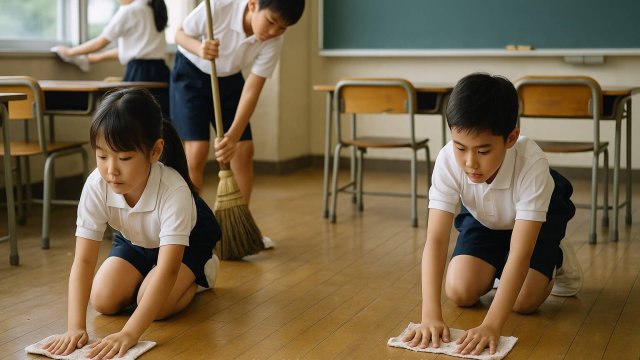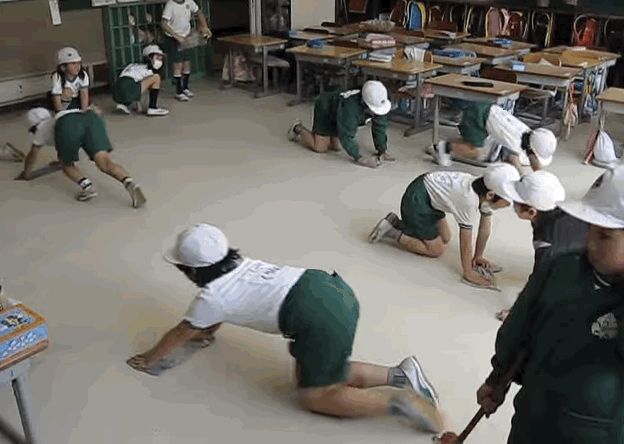
- Better Society -
- 2mins -
- 18,594 views
Why Japanese Students Clean Their Classrooms — and What the Rest of the World Might Learn From It
One of the most distinctive and widely known traditions in Japanese schools is o-soji—the daily cleaning routine carried out by the students themselves. This practice often makes headlines abroad, though it’s frequently misunderstood or oversimplified.
Do Japanese Schools Really Not Have Janitors?
Contrary to what’s often reported, Japanese schools do have janitors. These non-teaching staff members, known as yomushuji (or shuji for short), handle maintenance and cleaning tasks that go beyond the students’ reach—like deep cleaning and plumbing. They might also serve as crossing guards or assist with general upkeep. But the daily tidying? That’s mostly up to the students.
What Does the Daily Cleaning Routine Look Like?
After lunch, o-soji begins. For about 20 minutes, students roll up their sleeves and clean classrooms, corridors, and shared spaces, guided by cheerful marching music or classical tunes piped in over the school’s PA system—nicknamed “the o-soji song.”
This routine happens four days a week; Wednesdays and Saturdays are usually cleaning-free. At the end of each semester, there’s osoji—a more thorough “big cleaning” to wrap up the term.
How Is the Cleaning Organized?
Each class is responsible for cleaning its own room, plus two additional areas—like the library or the nurse’s office. To manage this, students are divided into han (small groups), with each team assigned to a specific area. The system isn’t just about hygiene; it’s about teamwork, responsibility, and respect for shared spaces.

What Are Students Really Learning From Cleaning?
Japanese parents and educators emphasize that students are gaining much more than clean floors. They’re learning that it’s better not to make a mess when you’re the one who has to clean it up. More importantly, they develop a sense of care for their environment and an appreciation for the work it takes to maintain it.
Older Students Mentor the Younger Ones
One touching tradition that highlights this spirit of mutual care: sixth-graders are often sent to first-grade classrooms to help the younger children clean. It’s a deliberate effort to foster connection across age groups—especially valuable in a country where many children are hitorikko (only children). Teachers believe that older students benefit from mentoring younger ones, while little ones gain role models to look up to.
Students Also Clean the Neighborhood
Three times a year, students from third grade and up take part in chiiki seiso—a neighborhood cleanup. Wearing cotton-knit gloves (gunte) and armed with child-sized brooms and dustpans, they head out to pick up litter around the school.
Not all schools still organize these events, but many educators see value in reviving them—especially with reports that teenage littering is increasing. “If more middle and high schoolers had to clean up their neighborhoods,” one commentator said, “maybe they’d think twice before dropping trash on the ground.”
Who Cleans the Toilets?
Schools vary in how far they go with o-soji. Some draw the line at toilet cleaning, leaving that to the shuji. Others assign latrine duty to older students, such as fifth- and sixth-graders.
Cleaning as a Form of Education
To outsiders, it may seem odd that students spend part of the school day cleaning. But in Japan, this time is seen as part of a well-rounded education. It’s not just about cleanliness—it’s about character building.
Students aren’t just cleaning. They’re learning to care for the spaces they occupy—and for the people who share them.
This article was first published on BrightVibes on January 31, 2018.
Note: The header image was generated by AI due to a lack of royalty-free alternatives.
Source: JapanTimes.co.jp

